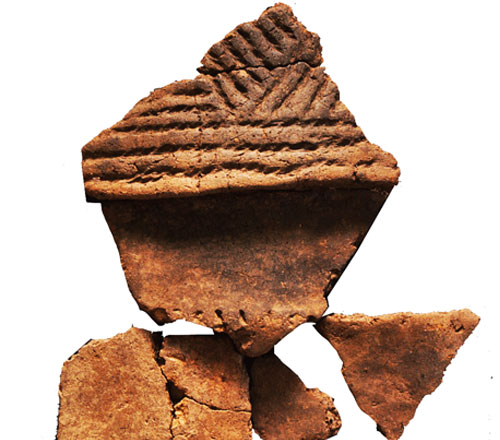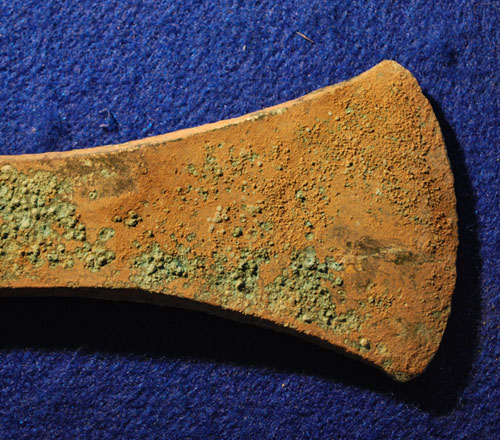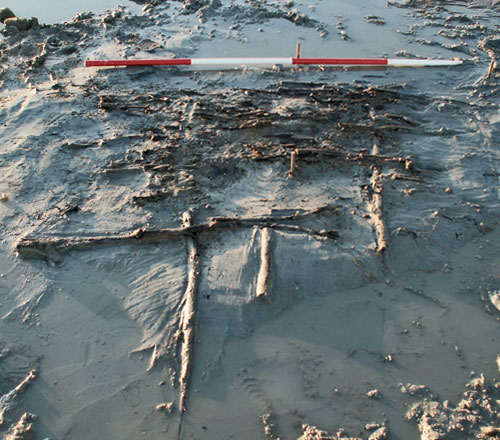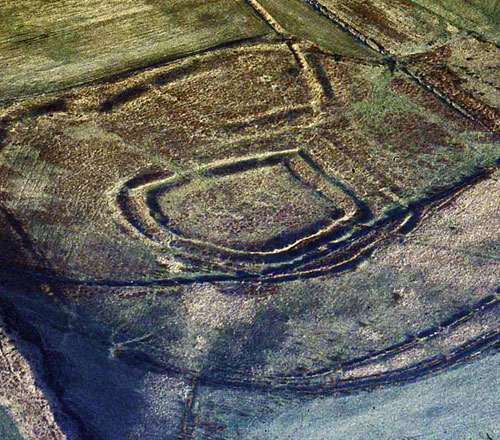The importance of things
Prehistoric times are conventionally divided into three ages based on the materials used to make their surviving tools. The original system was worked out in the 19th century; we now know that all sorts of different factors need to be borne in mind in defining archaeological periods, but it still forms a useful framework.
The characteristic needed for stone to make tools are that it should be strong enough not to break in use but not so impermeable that it could not be worked, it be capable of being worked in any direction, and it should be able to take a sharp edge for cutting and piercing implements. Of the stones available in the British Isles, the ones that most immediately meet those criteria are flint and chert, which chipped or ‘knapped’ into shape by the carefully controlled removal of flakes. Tools made out of both of these materials are popularly known as ‘flints’ but archaeologists prefer the term ‘lithics’ as being more inclusive. Flint is not naturally available in Wales, so any flint used for tools in our area must have been obtained from elsewhere. However chert is part of the local geology: seams of it occur in the Carboniferous Limestone of Gower and around Bridgend.
A few handaxes from the Palaeolithic, the Old Stone Age, are known from our area, but they are few and far between. Following the melting of the ice sheets and glaciers, Mesolithic (Middle Stone Age) people were able to exploit a much wider range of habitats. Although traces of their encampments are few and far between, we can follow their activities from finds of their stone tools. The tools most typical of the Mesolithic are microliths. These are small blades and points that would have been mounted singly in various combinations on wooden handles using natural glues like resin to make tools for all sorts of use. In the Neolithic period, the New Stone Age, flint and chert continued to be used for things like arrowheads and knives, but axes were also made from a variety of hard igneous rocks which are less brittle than flint. When thin sections taken from them are examined under a microscope, it is often possible to work out exactly where the stone was quarried. The nearest known quarries to our area are in the Preseli Hills in northern Pembrokeshire, but know that these artefacts sometimes travelled incredible distances. After being chipped to shape, they were carefully ground and polished, a job which would have taken days to complete.
Stone artefacts are the most common survivals from earlier prehistory, followed by bone, but one find from near Maerdy in the Rhondda was exceptional. This was a piece of oak carved with a concentric oval pattern and zigzag lines, dated by radiocarbon to c.4270-4000 BC, close to the time at which the late Mesolithic period was giving way to the early Neolithic. Unfortunately it was not possible to establish what it was for. There were other material too, much of biodegradable, such as leather, cloth, basketry and wood all of which only rarely survive. However, part of the Neolithic ‘package’ which came to Britain in the 5th millennium BC was pottery, which has been made and used almost continuously ever since, although in our area there is less of it in the Late Bronze Age and Iron Age, and people must have been using a higher proportion of containers and cookware that were either biodegradable or recyclable.
The introduction of copper-smelting technology signals the start of the Bronze Age. Copper is a very soft metal, but mixing it with other metals can allow much harder alloys to be made which are more suitable for tools and weapons. These are conventionally known as ‘bronze’, which is strictly speak an alloy of copper and tin, and not all the alloys in use would have been of this composition. There are no deposits of either copper or tin in South Wales, so it would all have had to be imported, along with the expertise for smelting the ores and casting the tools, weapons and jewellery it was used to make. Copper and the other metals used to alloy it melt at a lower temperature than iron, and it was not until the first millennium BC that iron-smelting techniques reached Britain. This new metal was much harder, especially when carbon was incorporated during the smithing process to produce a mild steel, so tools and weapons made from it were much stronger and more durable than those previously available. However, copper alloy castings continued to be used for fittings where absolute strength was less important than appearance. All the materials needed to make iron are widespread in South Wales, and smelting and smithing activity can be recognised in the archaeological record in the form of slags.
Themes
Hearth and home Very little evidence has been found so far in South Wales for where people lived throughout most of prehistory. Learn More
Every path tells a tale Prehistoric people, much like varying cultural groups all over the world today, understood the world in different ways. Spirituality and the inanimate world were intertwined in their daily life. Learn More
Down in the Flood Around the coast of South Wales a whole series of prehistoric landscape drowned by rising sea levels are now only visible at low tide. Learn More
The importance of things Throughout prehistory, artefacts and the technology that created them, have figured prominently in explanations of culture process and culture change. Learn more
About the project
Since the 1980s, we have received grant aid from Cadw to carry out a series of projects looking at the prehistoric archaeology of Glamorgan and Gwent. Some of them were survey projects, looking at the information available on a wide range of different monument types as part of a pan-Wales study aimed at improving protection. Others were locally focussed, and took place in response to a specific threat to a site or group of sites. Before new Planning Guidance was published 1990 (PPG16), these excavations included sites that were under threat from development, but if such project are carried out today, it would be the developer who would be liable for the costs. Cadw still grant-aids rescue excavation of sites that are being destroyed by natural processes, such as coastal erosion.
Please see here to find out more about us, our activities and our forward strategy








